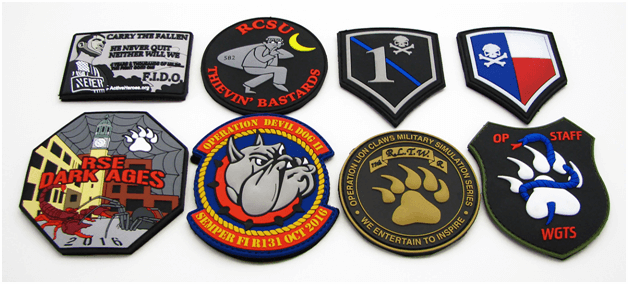If you decide to design and make an item, the only thing that would limit you is your imagination. Some people are more creative as compared to others, and that’s why some designs are better than others. If you want to challenge your ability in making custom PVC patches for yourself, gather your tools and coffee then proceed.
Nonetheless, there are factors to
consider to make the right custom patch correctly. But, what is a PVC patch? It’s a soft plastic
material that can get modified to any shape. Here are details o how to make PVC patches at home.
- Design
PVC
patch making process begins with designing. But, if you
don’t have a designing tool like Photoshop app, download from your play store.
After that, try and design your patch into the size and shape you prefer.
Remember, only your imagination can
limit you. So, place as many colors as possible then eliminate those you don’t
love. Also, add shadows and other effects as required.
- Cut
And Shape Your PVC Patch
If it’s your first time to design a PVC,
start with basic shapes like rectangle, square, and circle. However, you can
try other shapes too. Nonetheless, you need to consider the size of the patch
considering the gear on which you’ll attach it on.
If it’s a 2’’ round PVC patch, it will look
small such that people won’t notice it. But, if your goal is to minimize the
people who view your patch 2’’, then a round patch is your ideal option. Also,
if you want a flag PVC patch, consider a size like 2.5” *3.5”. The patch will
be visible and appealing.
If you need a hat patch, ensure the size
isn’t too big to cover the whole front part of your gear.
- Add
A Border
Adding a border to restrict the
merrowing machine from making any edges on your design. Draw a border further
from your PVC design. Remember, a merrow machine gives your design a
professional look.
- Balance
The Look Of The PVC Patch
When designing a PVC patch, it’s essential
to place the details evenly. Suppose you place all the letters on one side of
the patch; it will look unbalanced. Design your own embroidered patch to fit your needs but ensure
you incorporate your best style.
Also, choose the right background and
cut it to a size which is proportional to your patch.
- Print
Your Patch
Once you’re through putting together all
the elements of your PCV, print and check whether it fits what you had in mind.
If it passes the threshold, well congrats. However, it is important to note,
whatever you see on your printed paper is the same outcome you’ll get when you
embroider the PVC to your gear. So, if it’s not appealing, rectify the mistakes.
- Order
If your patch is perfectly designed,
upload a picture and send it to patch depot that is reliable and affordable. However, if you
have a PVC logo maker,
manufacture the patch and sew it to a hat or attach it to gear.
Take
Away
With practice, you will be able to DIY PVC patches
excellently. Nonetheless, now that you know how to make PVC patches at home start with simple shapes, and
then proceed to more advanced PVC patches.

